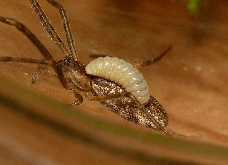For many years I’ve been skirting the sidelines of the debate on hydraulic fracturing (commonly known as fracking), occasionally dipping in and out of articles but usually concluding that I don’t know enough to make an informed decision. However fracking has now come to me, placing itself firmly on my doorstep – so I’ve decided it’s about time I did my research!
I live in Bury, a region in the north of Manchester which, according to the amusingly named website ‘Frack Off’, sits within what is known as an oil exploration block. This being an area of land, typically 1000s of square kilometres in size, which has been ‘awarded’ to an oil drilling and exploration company by the government. Apparently the lucky exploration company with control over my home turf is Hutton Energy.

The reason my home county is such hot property for energy companies is because the ‘British Geological Survey Gas-In-Place Resources Assessment of Bowland Shale’ has suggested that it sits above a large amount of, possibly gas rich, shale rock. Shale is a fine-grained sedimentary rock formed by compression of mud (mineral particles and organic matter) over time. It is also incredibly common, forming over 35% of the world’s surface rock. Over millions of years shale becomes buried deep within the Earth and, when it reaches depths of over 2 kilometres, heat and pressure cause organic matter within the shale to release methane gas – it is this ‘natural gas’ which can be harvested to generate electricity for domestic use. The problem with shale gas is that, unlike conventional gas supplies (such as those harvested in the North Sea) which collect in large reservoirs, the methane in shale is trapped by the fine grain structure of the rock. It is only when shale rock is drilled and fractured that the gas is released and can be harvested. This process of fracturing shale rock to harvest methane gas has caused an enormous stir, with supporters on both sides of the debate campaigning ferociously.
But what are the debates for and against this process and how relevant are these to fracking in the UK?
To understand these arguments it is first important to know what hydraulic fracturing really entails and there is no doubt that the process sounds particularly invasive. For starters, shale gas exploration companies will drill large boreholes down into gas-bearing shale rock. These holes will stretch thousands of miles below the surface of the ground and, in many cases, will continue horizontally through the shale rock. These boreholes are then lined with steel and concrete for stability and to limit leakage of fracking-related materials into the surrounding land. Next, a perforating gun is used in the lower segments of the borehole to make a number of small holes in the concrete casing – these holes are concentrated in the parts of the pipe sitting within the shale rock. Finally, a mixture of water, sand and chemicals is pumped under high pressure down the borehole and out of the small holes in the concrete piping. This high pressure water mix causes fractures to develop in the shale rock, while sand within the water lodges in these cracks ensuring that they remain open and porous. This process allows gas trapped within the shale to flow out of the rock and then travel back up through the borehole to the surface for harvesting.

Supporters of this process argue that fracking in the US has significantly boosted domestic oil production, driven down the cost of gas and created many job opportunities. Those in favour also suggest that fracking can generate electricity at half the CO2 emissions of coal – but, be aware that this figure varies depending on sources and that some argue that the atmospheric pollution caused by fracking is actually no better than that of traditional coal extraction. The benefits here are attractive for the UK, especially since our North Sea gas fields are reaching the end of their lives, most of our nuclear plants are planned to close by 2023 and a third of our coal-fired power stations are set to close by 2016 to meet European air quality regulations. So, we are undoubtedly in need of an energy boost. However, it is interesting to note that oil and gas industrial representatives recently told ‘New Scientist’ that “ it would take at least 10 years for the UK to produce a meaningful amount of shale gas, making it a poor substitute for dwindling North Sea production in the short term”
So is fracking fit for purpose, especially considering that many academics agree that a move towards renewable sources of energy is preferable?
Those opposed to the process argue strongly that fracking introduces too many health and environmental concerns to be a viable and safe source of energy. Specifically, many are concerned that methane gas and fracking chemicals could travel upwards through natural fractures in the rock, polluting underground aquifers and further contributing to global warming. It is also suggested that leaks in pipelines could lead to further aquifer pollution. These concerns are certainly valid, however to date there have been very few peer reviewed articles published suggesting that chemicals and methane released by the fracking process have reached local aquifers. It is also argued that these risks can be significantly minimised by strict regulations and regular monitoring. For example, thorough geological surveys should be carried out prior to exploratory fracking to detect pre-existing fractures, pipelines should be strongly reinforced and regularly monitored and chemicals used in the fracking process should be assessed and approved by the environmental agency.
Many opponents to the process also raise concerns that fracking may trigger earthquakes. Again, to date there have been few proven links between fracking and earthquakes. However, one of the few instances where this has been the case was in 2011 when two small earthquakes struck Blackpool close to an exploratory fracking site. Experts suggest that these quakes were caused by lubricated rocks slipping along a small fault line. Cuadrilla, the company in charge of the Blackpool site, propose that they will now monitor seismic activity around all their fracking sites and, if small quakes begin to occur, they will reduce the flow of water into the borehole, or even pump it back out preventing bigger quakes.
Indeed, many of the environmental and health concerns raised against fracking seem to be manageable given stringent regulation and proper monitoring – something which the UK government claim to take very seriously.
In my view more research is still needed to explore the validity of existing environmental concerns while stringent regulations must also be put in place before going forward with further exploratory work. This all leads me to one big question: can we trust those involved in the process to ensure this happens?
On a personal level I’m still not convinced, there does seem to be a strong vested government interest in moving fracking forward – in some cases this is happening to the detriment of local councils and areas of natural beauty. In my mind urgency is the mother of mismanagement so, until I’m convinced that fracking in the UK will be properly managed, local communities will be consulted and engaged as part of the process and this will not be used as an excuse to slow down on development of more sustainable energy resources I think I will remain skeptical.
Post by: Sarah fox
Save
Save






 Paolo is currently a final year student in Microbiology at the University of Manchester, UK. Science communicator wannabe, he has a keen interest on everything related to HPV, viral oncology and parasitic infections to just say a few. Every bit of his free time is used for planning and getting involved in new projects, baking and getting lost in museums. You can follow him talking about science festivals, geeky stuff and bake off on
Paolo is currently a final year student in Microbiology at the University of Manchester, UK. Science communicator wannabe, he has a keen interest on everything related to HPV, viral oncology and parasitic infections to just say a few. Every bit of his free time is used for planning and getting involved in new projects, baking and getting lost in museums. You can follow him talking about science festivals, geeky stuff and bake off on The first of the symbioses involves relationships between two different species which benefit both organisms. Mutualistic symbiosis can involve organisms of all shapes and sizes from
The first of the symbioses involves relationships between two different species which benefit both organisms. Mutualistic symbiosis can involve organisms of all shapes and sizes from  In contrast to mutualistic symbiosis, the interaction between two organisms may be less savoury in nature. Parasitic symbiosis describes a relationship between organisms where the
In contrast to mutualistic symbiosis, the interaction between two organisms may be less savoury in nature. Parasitic symbiosis describes a relationship between organisms where the  An even more detrimental relationship exists between the
An even more detrimental relationship exists between the